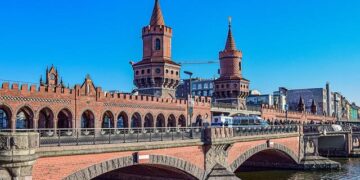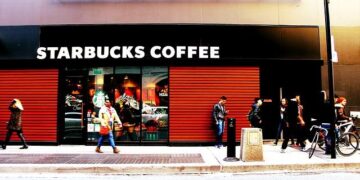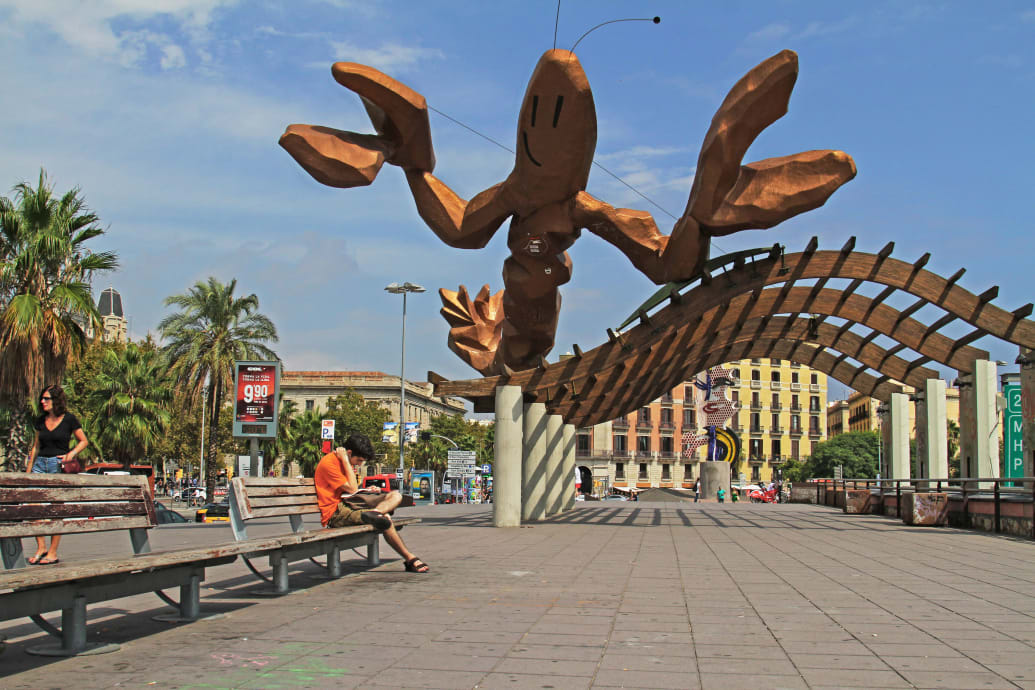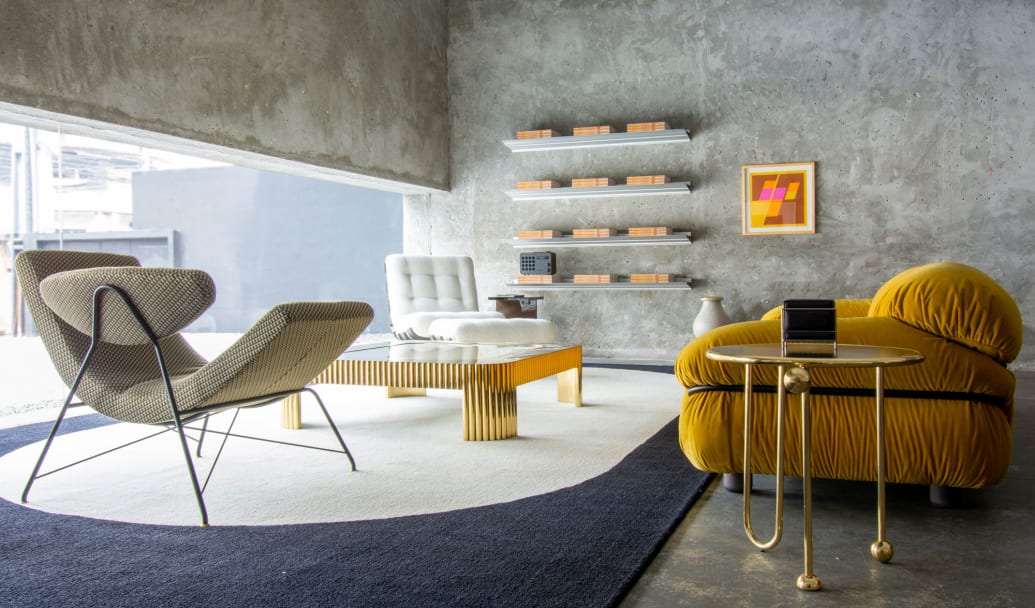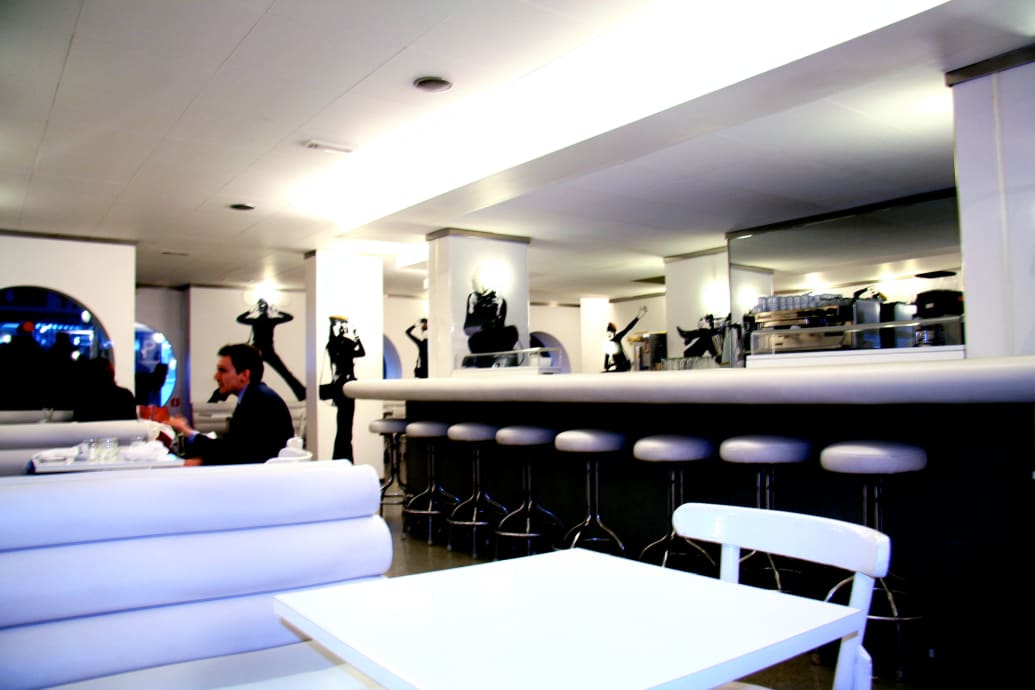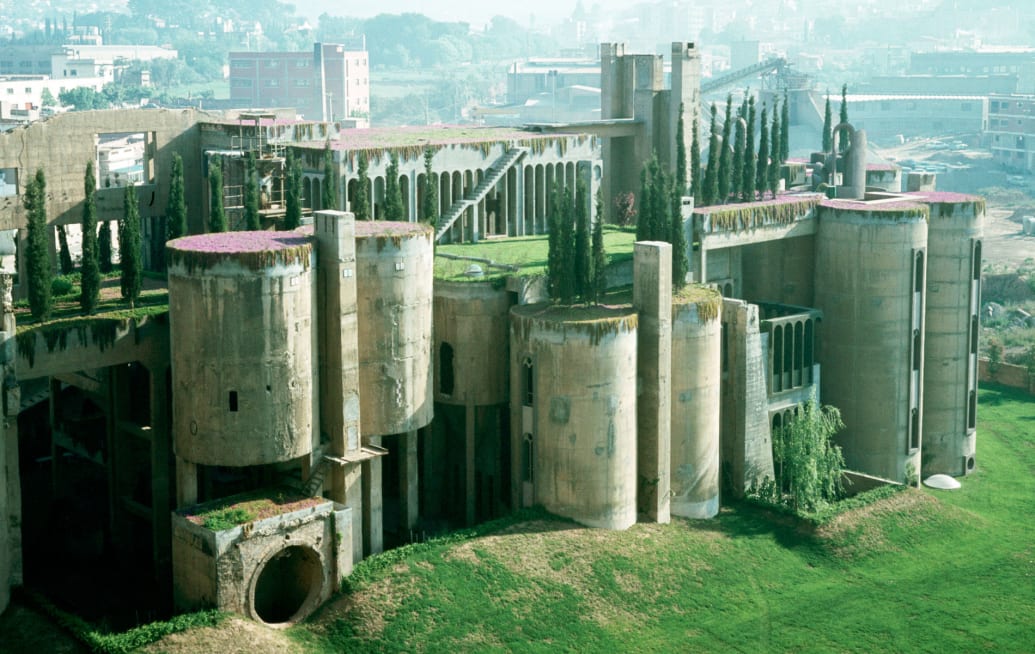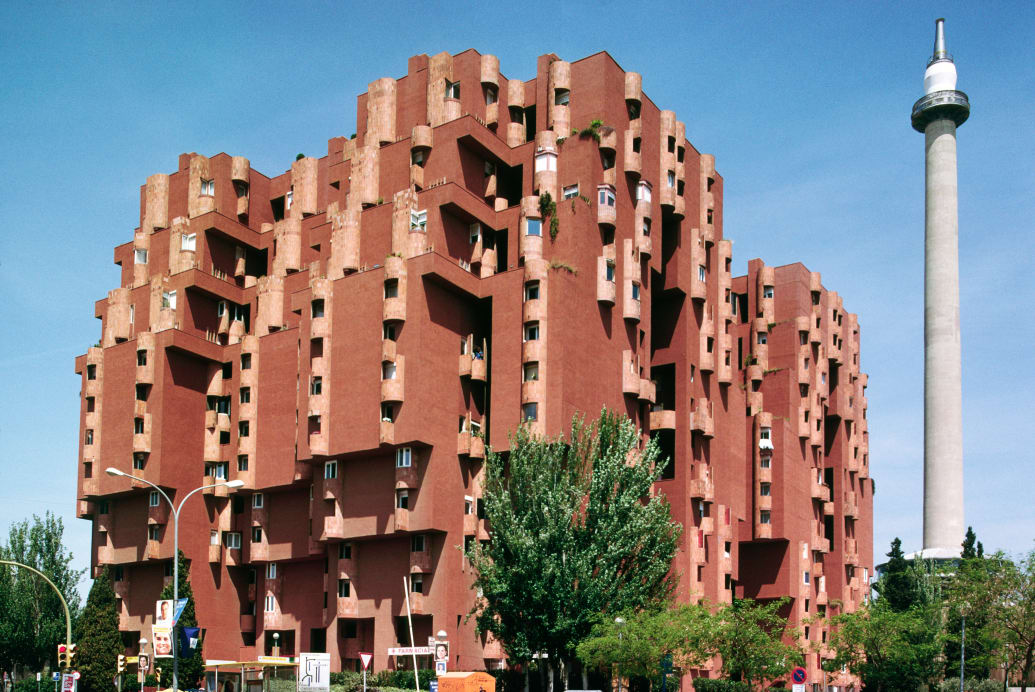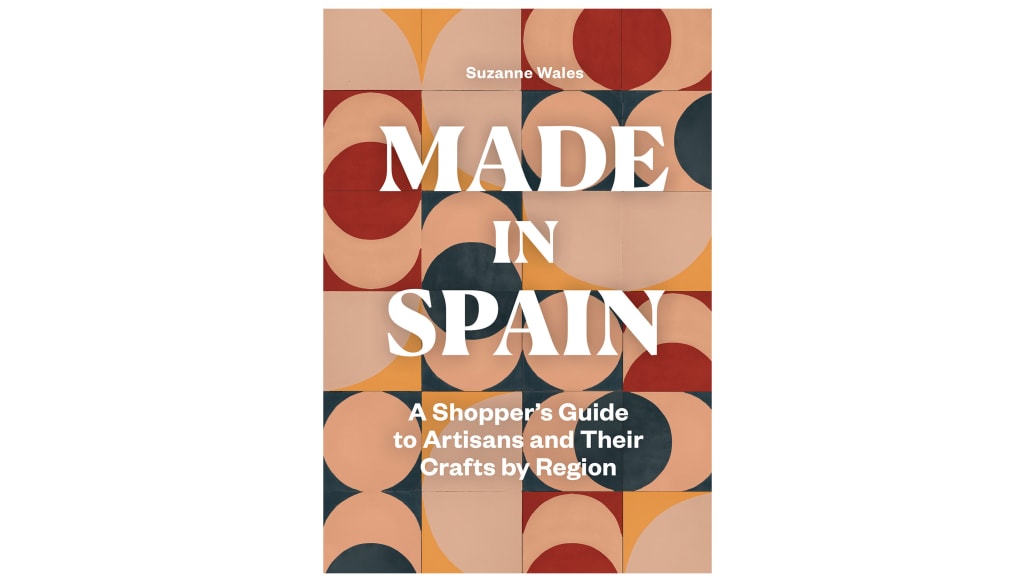Today, craft and design are intertwined in Barcelona. The cultural boom that was triggered by the death of General Francisco Franco in 1975 resulted in another creative renaissance, and this time its language was contemporary design. Since then, Barcelona’s standing as “design city,” visible in shops and architecture, signage and even street layout, has not wavered.
Made in Spain, Intro, Chapter One.
“Estudias o diseñas,” the bartender asked me with a wink, “Do you study or do you design?” With only basic Spanish to call on I asked my friend what he meant. She explained that in Barcelona in 1992 “design” was a trendy metaphor for “work.” The penny dropped.
In the spring of 1992, Barcelona was in the throws of Olympian joy and design fever. After 36 years of dictatorship, Spain was in its infant years of modern democracy, and Barcelona’s nomination as host city for the Summer Olympics of the same year was a golden opportunity to reset and present a revamped, modern metropolis after decades of cultural, social and political neglect. Billions of pesetas had already been spent in widespread improvement of the city’s transport and road infrastructure, opening up its waterfront, dusting off the facades of Gaudí landmarks, and beautifying the old city with charming squares, boulevards and playful street sculptures. With the major work now in place, designers were stepping in to put the icing on this much-lauded urban landscape. The city’s legendary, 24-hour nightlife proved to be the ideal platform.
Bars de disseny (Design Bars) were not only the places to see and be seen in the late 1980s and early 1990s in Barcelona, but also represented a cultural shift. Signed by designers such as Pepe Cortés, Alfredo Arribas and Javier Mariscal, an illustrator who was commissioned to create Barcelona’s quirky, cartoonish Olympic logo, a night on the town was a sensory overload and chance to mingle with the new glitterati. Postmodernism and the Memphis movement were notable obsessions. Surfaces, mostly in metal or glass, were hard and angular and grand, flashy gestures abundant. Daring bursts of color riffed on graphic styles, logos and popular symbols of the time. You had to mind your toilet manners when going to washrooms, as the facilities were unisex and walls invariably made of diffused glass. A giant, pointed metal pendulum famously swung back and forth over the dancefloor of the bar Nick Havanna, and the multi-level nightclub Torres d’ Avila had a metal canopy for go-go girls that moved up and down on wires, holes punched into the floors, and sputnik-shaped lights and tables. In his seminal book Barcelona, the art critic Robert Hughes described it as “the most seriously unenjoyable boîte de nuit in Spain.”
Perhaps unsurprisingly then that by the start of the new millennium the design bar phenomenon had all but disappeared. Only a few relics remain, such as Mariscal’s exuberant giant prawn sculpture Gambrinus (once perched the rooftop a long-gone bar, now a lonely crustacean by the waterfront) and Snooker, a more timeless cocktail bar with numerous pool tables.
Gambrinus, a sculpture by Javier Mariscal, on the waterfront in the old Port of Barcelona.
Getty Images
The lighting, furniture and industrial design firms that sprang up in Barcelona’s design-obsessed decades have proved to have a more lasting mark on the city’s aesthetic stamp. Companies such as Santa & Cole, the prolific design “editors” who worked closely with local creators to produce so much of the discreetly elegant signage, lamp posts, benches and other elements that speckle the city’s beautiful streets and boulevards. Or Nani Marquina, whose handwoven rugs form part of the collection at the MoMa, and whose father Rafael designed perhaps the most ubiquitous Catalan design icon of all—a non-drip, glass, olive oil cruet for the domestic table.
Courtesy of B.D. Barcelona
In 2023, B.D. Barcelona, the name most synonymous with Catalan-designed furniture, lighting and decor objects, is celebrating its 50th year. Perhaps fittingly, the company was born in a bar. Back in the early 1970s, Club Bocaccio was the hangout of the gauche divine (or “divine left”), a group of cava-swilling artists, architects and intellectuals who sought to ignite creative freedom and cultural modernity in the last years of the dictatorship. From early ventures into experimental and avant garde pieces —one of the earliest pieces produced were wall stickers that simulated a bedhead and fireplace—the company went on to commission a host of designs that are still very much relevant today. Classics such as the lightweight, almost ethereal Catalano bench that blends so well with the city’s elegant streets: the Gaudi-inspired Gaulino chair by Oscar Tusquets that takes it sinewy cue from the maestro of modernisme; or an ingenious, vertical letterbox for apartment building lobbies that occupies less space and won’t crumple the delivery of printed matter. These, and other pieces from the company’s catalogue that include designs from Salvador Dalí to Jaime Hayon, create a complete compendium of modern Spanish design. You can see most of them at the company’s showroom, which is located in a warehouse that at one time was also part of the design bar circuit.
The interior of Flash Flash, in Barcelona.
Lux & Jourik/Flickr
In Barcelona today, there are many signs of nostalgia for the optimism and flow of the city’s Olympic decade. Over the past year or so, the early buildings of the Catalan architect Ricardo Bofill have flooded social media, triggering a new wave of design pilgrims to his groundbreaking works Walden 7 and La Fabrica, both situated on the outskirts of Barcelona. After an exhibition at Barcelona’s Collegi d’ Arquitectes, locals have rediscovered the architects Federico Correa and Alfons Milà. Working under the studio name Correa Milà, they were prolific in the mid-century movement in Spain, creating both private residences that expose a softly edged, Mediterranean modernism and highly imaginative, early apparitions of the design bar phenomenon. Of the latter, two remain in their original form. Flash Flash is a hamburger and tortilla institution adorned with life-sized painted murals of a Twiggy-type young woman (the model was the wife of co-founder Leopoldo Pomés, a photographer and cohort of the ‘gauche divine’), glossy red walls and curvaceous white leather banquettes. In the same street, Il Giardinetto is much loved by the city’s creative establishment—a split-level Italian restaurant soaked in all shades of green and trompe l’oeil murals in the form of trees and foliage. Winner of the 1974 FAD Interior Design Award, its facade is embedded with a small glass display box where local designers can put their current work on show.
The exterior of La Fabrica, outside of Barcelona, by architect Ricardo Bofill.
準建築人手札網站 Forgemind ArchiMedia/Flickr
The exterior of Walden 7 outside of Barcelona by architect Ricardo Bofill.
Adrian Greeman/Getty Images
With most of the original founders now near retirement age, Ricado Bofill’s son Pablo, along with the founders of the hip architecture and interiors magazine Apartamento, and members of the studio Arquitectura G have recently taken over the creative reigns at B.D. in an effort to revive the brand. Under their direction, a new marketing campaign contextualizes the company’s iconic pieces for millennial design buffs. Some images place the pieces in the city’s “Olympic Ring”—an enduringly futuristic complex of stadiums, venues and vast concrete plazas where the 1992 games were staged and are still popular for large-scale concerts and sporting events. The effect is striking, and a fitting homage to the exuberant, slightly madcap creativity that has made Barcelona the uniquely inspiring city it is today.
—
Publisher
Suzanne Wales is the author of the recent book guide to the craftspeople and artisans of Spain, Made in Spain: A Shopper’s Guide to Artisans and Their Crafts by Region. A bilingual, Spanish/Australian citizen, she has been resident in Barcelona for more than 20 years, working across a wide range of media. Her stories on architecture and design regularly appear in leading international publications. Check out her tours of Barcelona’s architecture here.
>>> Read full article>>>
Copyright for syndicated content belongs to the linked Source : The Daily Beast – https://www.thedailybeast.com/the-counterculture-phenomenon-that-made-barcelona-a-design-capital

